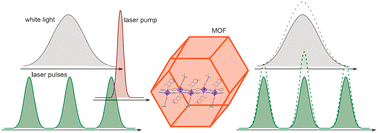Metal-mediated tunability of MOF-based optical modulators†
Abstract
We report on the design of 1D MOFs based on a nopinane-annelated organic ligand and Co(II) or Ni(II), the variation of which allows tuning the optical modulation bandwidth. Structural and time-resolved analysis revealed the optical modulation mechanism, the rates and its endurance, thereby enriching the list of sustainable MOFs for tunable optical modulators.



 Please wait while we load your content...
Please wait while we load your content...